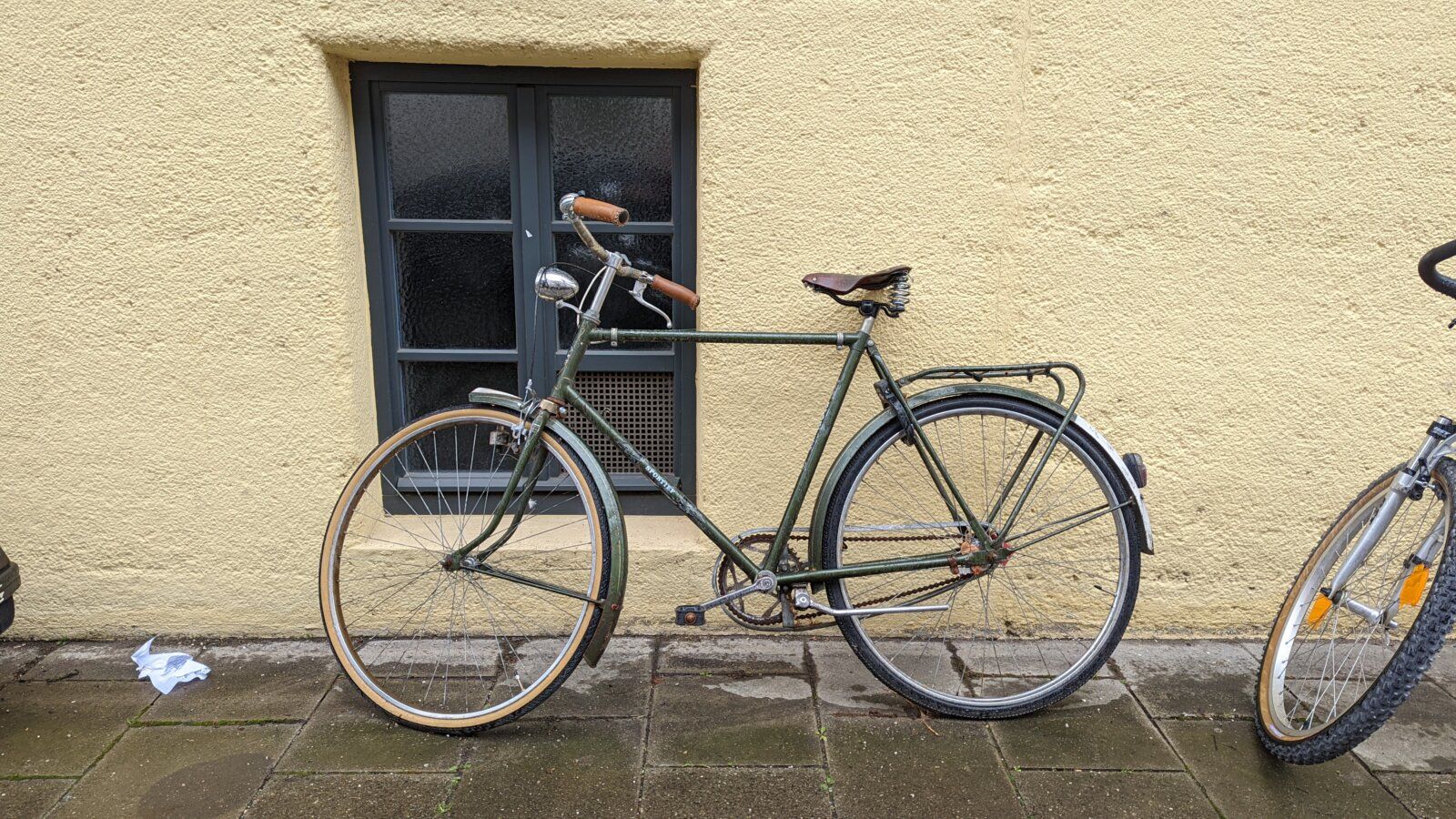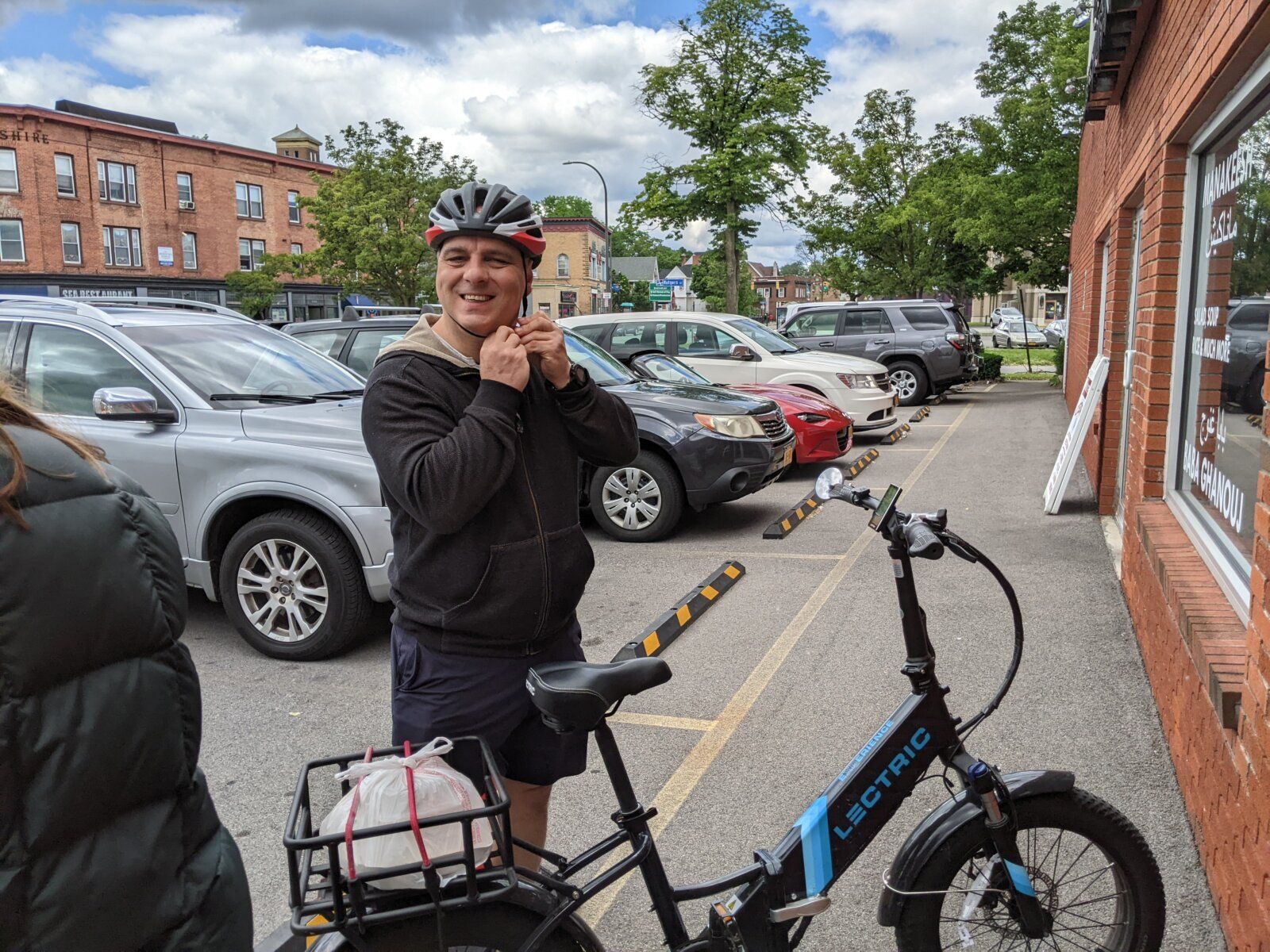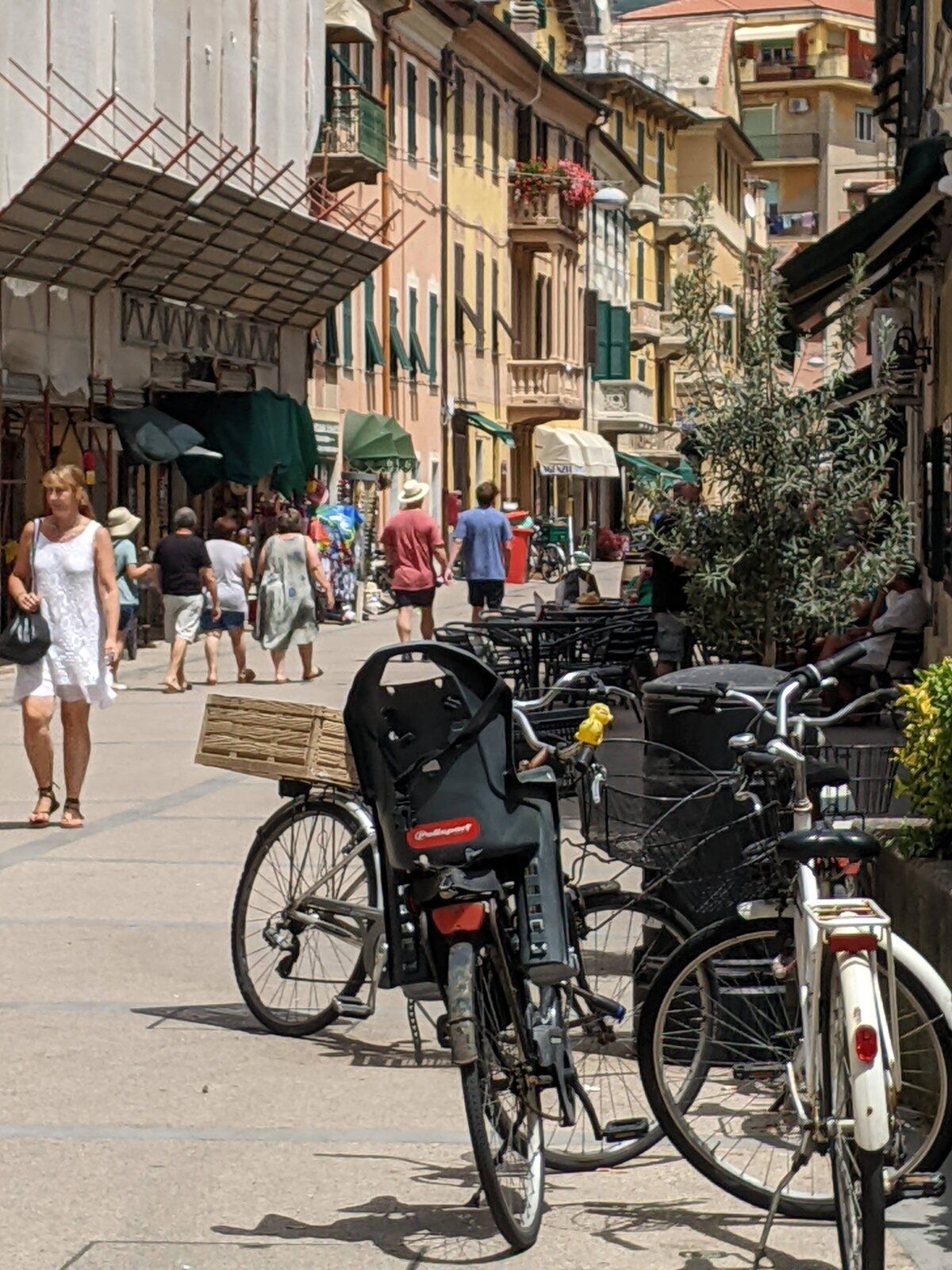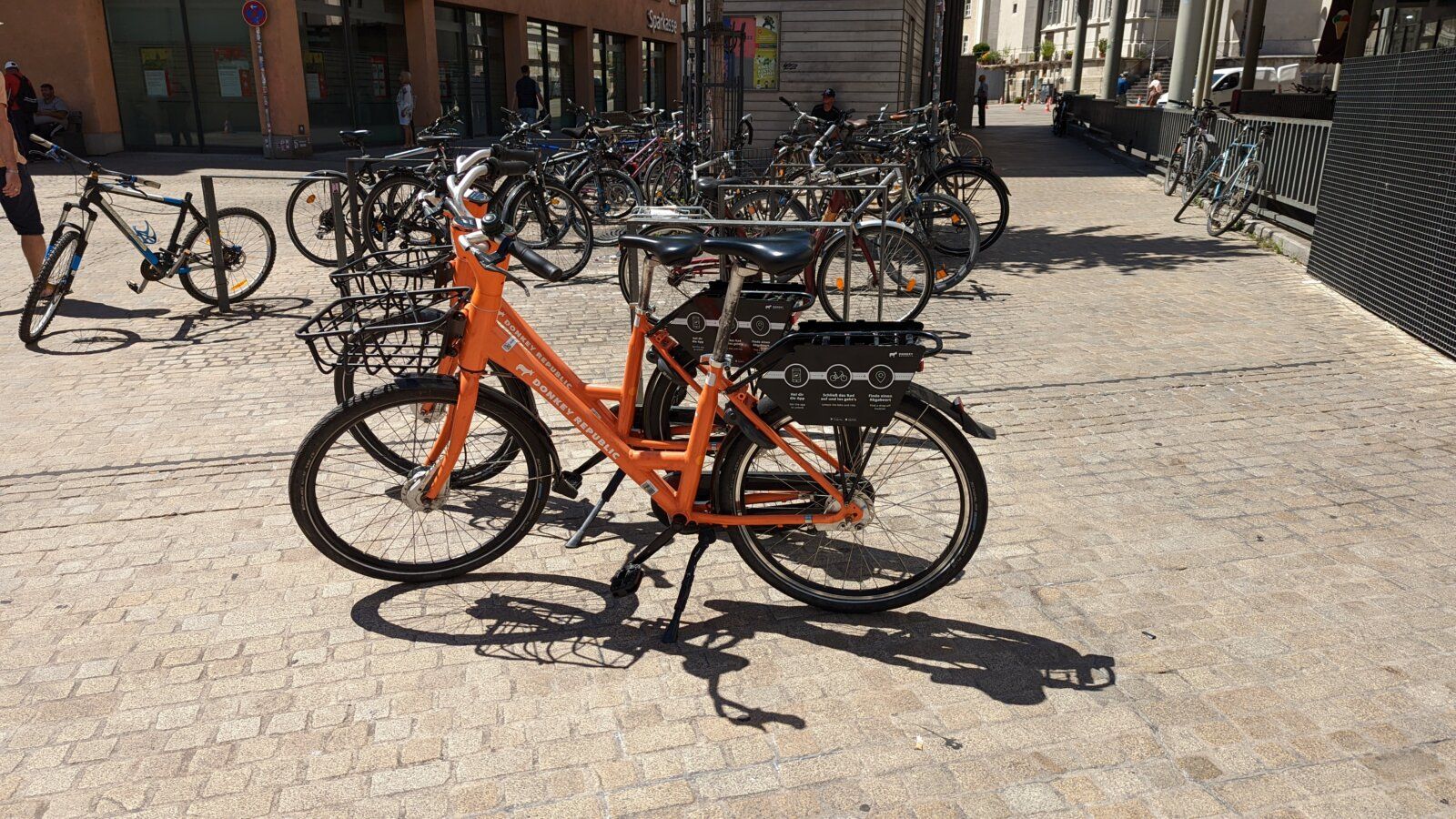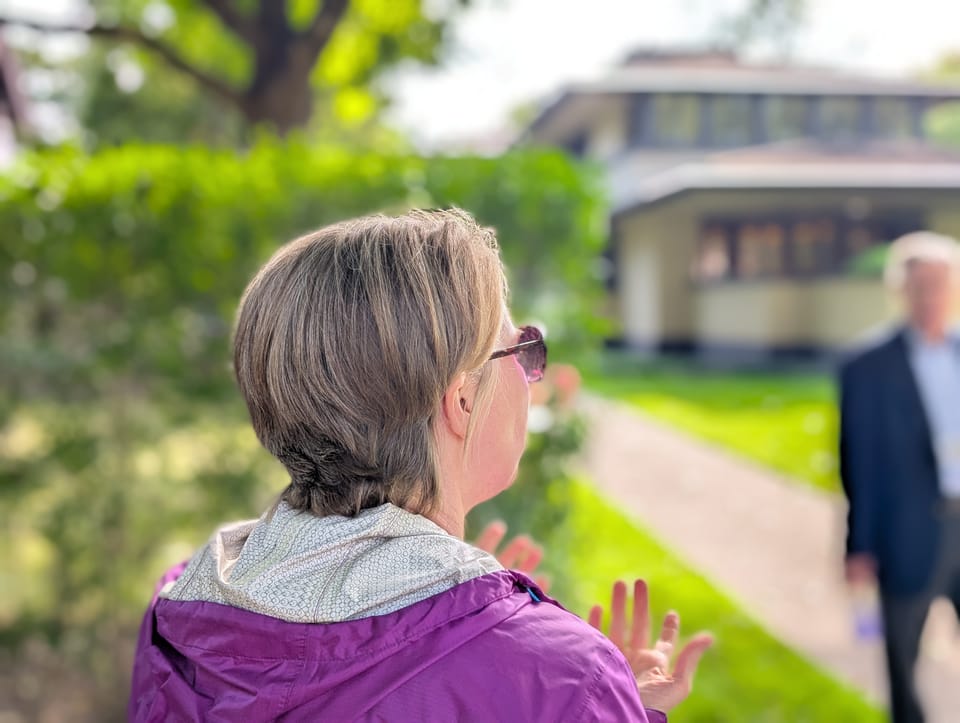Europe Trip #2 – July 5, 2022 – The Bike Report
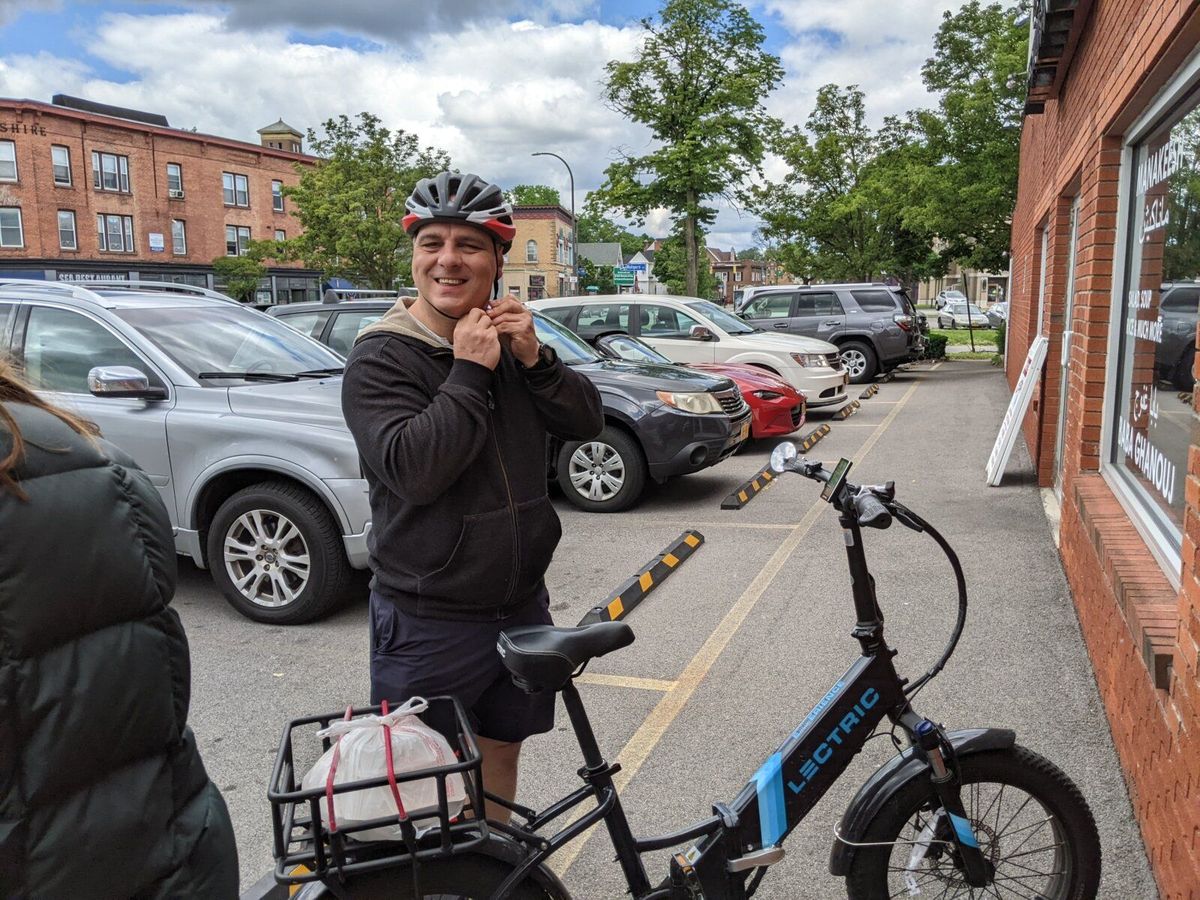
Sitting here quietly in Regensburg apartment #2, listening to Monkey rapping vigorously in German.
For those interested, here’s her German playlist:
The last trip had a coffee report. This one has a bike report.
Let’s start with what makes a great bike infrastructure and should you care? You know how the presence of healthy frogs indicates clean water, well, lots of bikes means you have a healthy-for-humans public space. If you have a lot of bikes you can move people where they want to go while allowing them to interact with each other and you avoid a ton of noise.
Here’s a good intro video on biking in public infrastructure. The best bike infrastructure has separated paths for bikes that protect them from fast moving cars and let them keep their speed up by avoiding slow moving pedestrians. This is ideal but not essential. The most important thing is to slow down the speed of cars and trucks in places where they interact with bikers.
Munich
The gold standard of public transport + separated bike infrastructure in our travel experience. Lots of completely separate paths for bikes even in dense urban areas. Loads of bikes on the street.
Grade: A+
Bologna
A dense, narrow urban environment than Munich with wide pedestrian-only arcades. Big busses whoosh noisily around. There were some riders and not a huge amount of traffic, but I would not feel comfortable riding here.
Grade: C+
Rochester
Not a European city, but I wanted to highlight it in comparison to Bologna. Modest but growing separated bike infrastructure, slow driver speeds on residential streets, busses not loudly wooshing because they are late or nonexistent. Most daily business can be done on bike. Not bad.
Grade: B
Levanto
A hilly small town on the Italian Riviera with narrow winding roads, when we arrived this didn’t seem like great bike country. There were very many mid-drive ebikes here out of necessity. We had an absolutely charming e-bike day where we rode on the coast and up into the hills.
What made the difference was the Italian drivers and community spirit. You really get the sense that the roads were intended to be navigated together and there was a constant mix of pedestrians, bikes, ebikes, scooters, scooter-trucks, motorbikes, small cars, medium cars, and trucks all generously negotiating together.
The driving speeds throughout town and in the hills were slow (max of about 30 mph) and everyone was on top of their game. This was a place where a car could zoom by 18 inches from you and you wouldn’t even mind.
Grade: A
Regensburg
Munich-level public transport. Berlin-levels of auto traffic (about 15% of what you’d expect given the size of the streets). It’s quite a combo. The inner city is an autoluw (nearly car-free) space.
There are so many cargo bikes here. It’s routine to see two kids getting biked around by a parent. The only demerit here is the inner city spaces are shared between bikes and pedestrians and the peds are so plentiful that the bikes really have to pick their way through.
Grade: A

